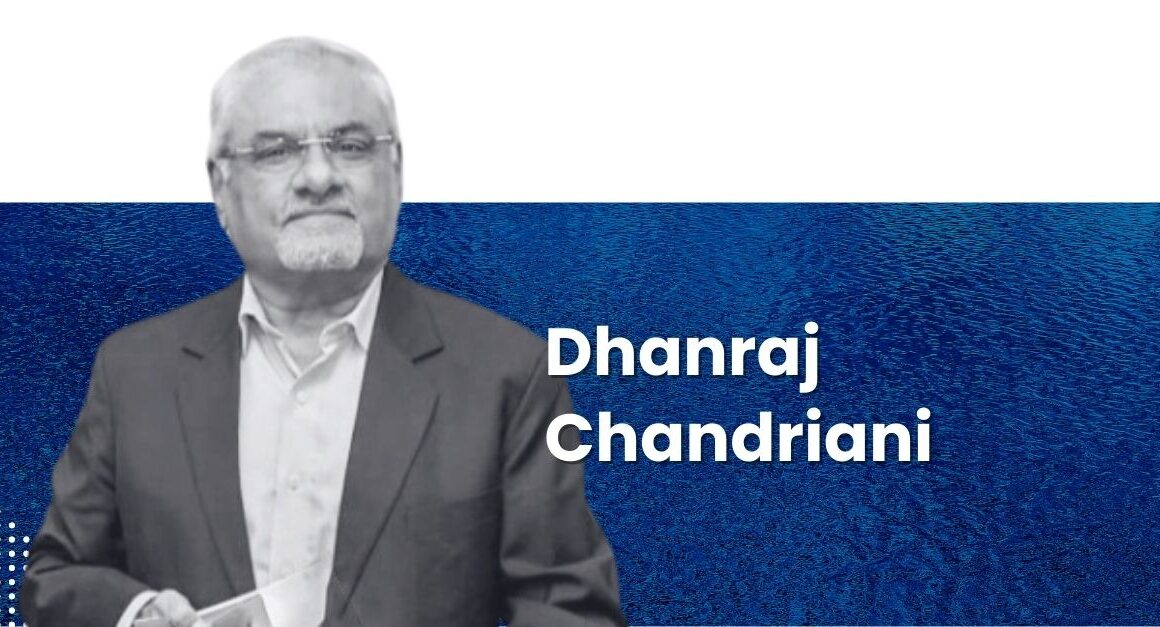Innovating Healthcare Infrastructure – The Role of Evidence-Based Design
In recent years, the concept of Evidence-Based Design (EBD) has reshaped the way healthcare facilities are planned and built. Drawing from empirical research, EBD seeks to improve patient outcomes, enhance staff efficiency, and contribute to long-term cost savings for hospitals. Today, we have the privilege of speaking with Mr. Dhanraj Chandriani, Managing Director of Technecon Healthcare, a leading brand that provides comprehensive services such as architectural design and planning, medical equipment procurement advisory, and management consulting for hospitals. In this interview, we aim to get deeper insights into the technical and philosophical aspects of EBD and explore its broader implications for the healthcare sector.
Defining Evidence-Based Design (EBD)
Can you describe your interpretation of Evidence Based Design (EBD) and how it differentiates itself from traditional hospital design approaches?
Evidence Based Design (EBD) integrates scientific research into every aspect of hospital architecture. Unlike traditional designs that might focus on aesthetics or cost alone, EBD prioritizes data-driven decisions to create environments that directly improve patient outcomes and staff performance. It’s not about building beautiful spaces for their own sake; it’s about creating environments where every design choice—from layout to materials—contributes measurably to better health outcomes, operational efficiency, and safety.
Could you share specific examples or case studies where Evidence Based Design (EBD) principles have demonstrably improved patient outcomes?
A prime example is the transition from multi-bed rooms to single-patient rooms. Research has shown that this design change significantly reduces the spread of hospital-acquired infections (HAIs) and enhances patient privacy, which can lead to faster recovery times. Another notable case is the strategic placement of nurse stations, which can minimize walking distances for staff, improve response times, and reduce fatigue, thereby improving both patient care and staff productivity. One cardiac care unit reported a 75% reduction in patient falls simply due to improved design.
How has the philosophy of Evidence Based Design (EBD) evolved since it was first introduced?
EBD began as a concept rooted in the basic understanding that the physical environment affects healing. Over the decades, it has evolved to be highly evidence-based, thanks to extensive research and case studies. What started as anecdotal improvements, such as better lighting or more efficient layouts, has grown into a well-documented approach. Today, EBD is supported by robust data, showing its impact on areas like reducing medication errors, decreasing infection rates, and improving patient satisfaction.
The Intersection of Design and Healthcare Delivery
Architectural design can directly influence patient safety and staff productivity. Could you explain how specific design interventions, such as room layout, nurse station proximity, and air quality control, contribute to reducing medical errors and improving operational efficiency?
Design interventions can have a profound effect on patient safety and staff efficiency. For example, the proximity of nurse stations to patient rooms reduces response times and minimizes fatigue, allowing nurses to provide more timely care. Additionally, organizing medication rooms with clear labeling and logical layouts can drastically reduce medication errors—some studies report up to a 30% reduction in errors due to well-designed medication spaces. Air quality control is another critical factor; incorporating HEPA filtration systems in critical care areas has been shown to reduce infection rates by improving the overall air quality.
In Evidence Based Design (EBD), technology plays a vital role, from air filtration systems to noise control mechanisms. How do you approach the integration of cutting-edge technology into hospital design, and what challenges arise in terms of balancing innovation with cost-efficiency?
The integration of technology in EBD is both essential and challenging. While innovations like laminar airflow systems and advanced acoustic management tools can greatly enhance the hospital environment, the key challenge is cost. Hospitals often face budget constraints, which means we must carefully prioritize technologies that offer the most substantial, measurable impact on patient outcomes. For instance, while installing HEPA filters in all areas might be ideal, we typically prioritize their use in high-risk areas like ICUs and operating rooms where they have the greatest effect on reducing infection rates.
In environments such as operating theatres and critical care units, standardized designs are crucial for reducing errors and streamlining procedures. How do you ensure that the design coherence required for these areas doesn’t hinder flexibility or innovation in other parts of the facility?
Standardization in critical areas like operating theatres is non-negotiable because it reduces variability, helping staff focus on patient care without the distraction of adjusting to different layouts or equipment. However, this doesn’t mean the entire facility needs to be rigid. In non-critical areas, there is more room for flexibility and innovation. For instance, in patient wards or public spaces, we can introduce customized designs that cater to specific patient demographics, such as pediatric wards or rehabilitation centers, ensuring that these areas are tailored to the unique needs of the patients while maintaining the overall efficiency of the hospital.
The Financial and Long-Term Benefits of EBD
Evidence Based Design (EBD) is often seen as an investment-heavy approach, especially in its early stages. How do you address the concerns of hospital administrators or financial stakeholders who might view these designs as cost-prohibitive?
EBD does require a higher initial investment, but this can be mitigated by its long-term benefits. The cost of constructing single-patient rooms, for example, might be higher upfront, but they result in shorter patient stays, fewer infections, and lower readmission rates—all of which translate to significant cost savings over time. When presenting EBD to financial stakeholders, I focus on quantifiable returns, such as higher patient satisfaction scores leading to increased occupancy rates, and reduced operating costs due to lower rates of medical errors and infections.
Some argue that the upfront costs of Evidence Based Design (EBD), such as single-patient rooms, are offset by long-term benefits, including reduced infection rates, higher occupancy rates, and fewer readmissions. How do you quantify these benefits when presenting EBD to potential clients?
We quantify these benefits by using data from previous projects and existing research. For example, studies have shown that single-patient rooms can reduce hospital-acquired infections by up to 11%, which not only saves lives but also reduces the costs associated with extended hospital stays. Additionally, improved designs that reduce staff fatigue and errors translate into better overall care, which boosts patient satisfaction and increases a hospital’s reputation, directly affecting its financial bottom line.
Enhancing the Patient Experience
There is substantial evidence suggesting that environmental factors, such as access to natural light, views of nature, and reduced noise, can positively affect patient recovery and well-being. How do you incorporate these factors into your designs, and have you observed a measurable impact on patient outcomes?
Incorporating elements like natural light and views of nature is now a central feature of EBD. Research shows that patients exposed to these elements experience lower levels of stress and pain, which can lead to faster recovery times. We prioritize large windows, open spaces, and outdoor views in patient rooms and communal areas. In fact, studies have demonstrated that patients with access to natural light require fewer pain medications and report higher satisfaction with their care. We’ve seen these principles at work in hospitals where such design features have contributed to shorter lengths of stay and improved overall patient mood.
How do color schemes, lighting, and space planning influence not just the physical but also the emotional well-being of patients and staff? Could you share any research or personal observations that highlight the psychological benefits of EBD?
Color schemes and lighting are carefully chosen to create a calming and supportive environment. For example, soothing colors like blues and greens are used to reduce anxiety, especially in high-stress areas like waiting rooms or ICUs. Similarly, we use circadian lighting systems that mimic natural daylight cycles, which help regulate patients’ sleep-wake patterns and reduce staff fatigue. Research shows that properly designed environments can lower blood pressure, reduce stress, and improve overall mental well-being for both patients and healthcare providers.
Global Perspectives and Future Trends
While Evidence Based Design (EBD) is increasingly recognized, its adoption rates vary across regions due to differing budget constraints, cultural factors, and healthcare systems. What strategies can be employed to promote wider adoption of EBD, particularly in regions with limited financial resources?
One strategy is to focus on scalable solutions that align with the financial capabilities of the region. For example, we can prioritize key interventions like better lighting and noise control, which are relatively low-cost but have a high impact on patient outcomes. Additionally, we advocate for phased implementation, where a hospital can gradually adopt EBD principles over time, allowing them to manage costs more effectively. Cultural adaptation is also crucial—designs should respect local customs and values, ensuring that EBD doesn’t feel like a ‘Western’ import but rather a solution tailored to the local context.
Looking forward, what trends or innovations do you anticipate will shape the future of healthcare design? How might Evidence Based Design (EBD) evolve to address the growing demand for patient-centered care in an increasingly digital and data-driven healthcare ecosystem?
I see several trends on the horizon, particularly the integration of digital health technologies into EBD. For instance, smart hospital rooms equipped with real-time monitoring systems and AI-driven diagnostics will soon become standard. These innovations will require flexible, adaptive design approaches that can accommodate rapidly evolving technologies. Additionally, there is growing interest in sustainable design, with more hospitals incorporating eco-friendly materials and energy-efficient systems. The future of EBD will involve a deeper integration of data analytics, where patient outcomes are continuously measured and used to refine and improve design practices in real time.
About Mr Dhanraj Chandriani
Mr Chandriani, Managing Director of Technecon Healthcare, currently leads a diverse team across various healthcare projects, leveraging over 35 years of expertise in the sector. Having been involved in nearly 100 healthcare projects, he has provided comprehensive consultancy in areas such as hospital planning, medical equipment, IT services, and HR. His career began at Xray & Electromedicals (India), where he rose to CEO, and later, as Director – Healthcare at Manipal Group, he governed hospitals and healthcare institutes. As a Consultant Advisor to the Government of Maharashtra, he guided World Bank-funded healthcare projects, focusing on Public Private Partnerships (PPP). With an academic background in Physics, Mathematics, and Hospital Administration, and certifications in NABH, he continues to contribute to the evolution of healthcare infrastructure.
Disclaimer:
The views and opinions expressed in this article are those of the expert, and do not necessarily reflect the official policy or position of the platform (Hello-Pharma.com) or any entities related to the platform. The platform does not endorse or take responsibility for the content and encourages readers to seek professional advice before making any decisions based on the information provided.






